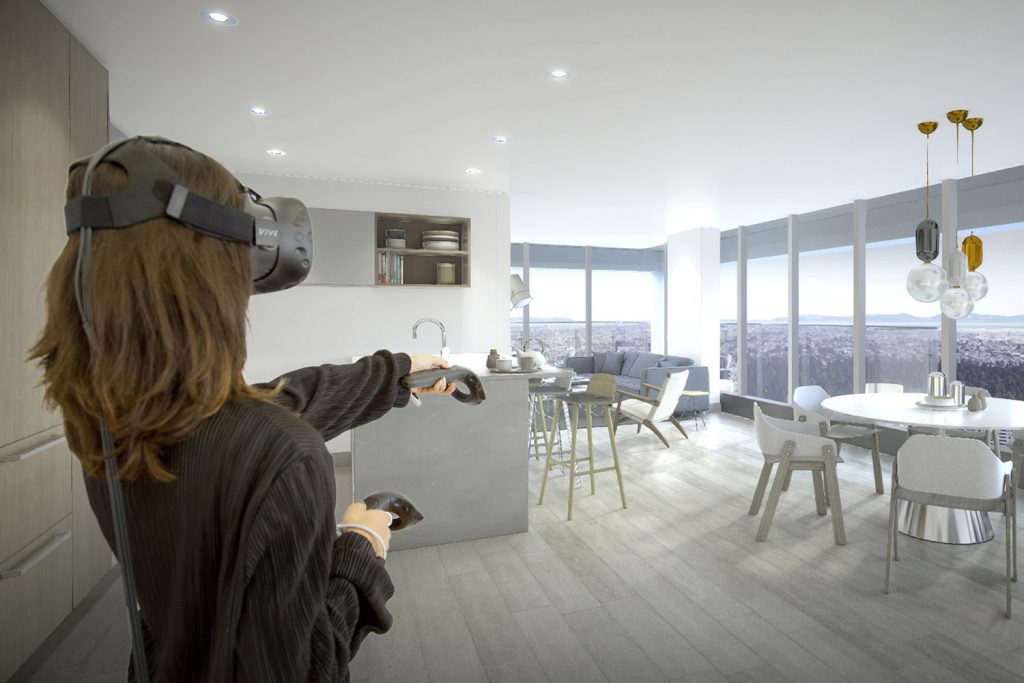In the past few years, Virtual Reality (VR) has become a buzzword mostly associated with the gaming industry. But the niches looking into and gradually adopting immersive 3D technologies into their operations is rapidly expanding, most notably, in the real estate industry. What is this new technology and how can you use it to drive profit for your business?
VR Defined
Virtual Technology, at its core, is the use of combined computer technologies to curate simulated experience. Instead of interacting with a world on a computer screen using a control pad or a mouse and a keyboard, VR technology takes its audience inside the screen — at least virtually, using a computing device that serves as a gatekeeper to this artificial world.
In this virtual reality world, the audience can interact with the objects as if in real life, blurring the line between the real and the imagined.
This makes VR a powerful tool not for only storytelling as it is used in games but also in marketing, finance, human resources, and generally, in business.
Let’s take a look at how VR can disrupt real estate business as we know it.
VR and Real Estate
According to a 2016 survey by the National Association of Realtors, 95 percent of real estate clients use the internet to look for properties.
Traditionally, a potential client scans through thousands of listings where a set of information about the properties for sale are given: the number of square areas, bedrooms and bathrooms, information about the neighborhood, etc.
These listings heavily rely on photos to give its audience a first look at the properties without the need for for a visit. However, pictures can only demonstrate so far and at the end of the day, the potential buyer still needs to see the property in person for a final look.
With the use of 3d architectural renderings and 3d walkthroughs, some real estate businesses today are getting ahead of the game by letting their clients in for a unique shopping experience.
These VR systems allow agents to showcase their properties via virtual tours where clients can visit multiple properties of interest without leaving the comforts of home.
Better with VR
Some of the amazing ways real estate companies are using VR technology to help their clients find the perfect property match includes:
- Virtual staging. Clients are shown how an empty apartment or home would look like with furniture built in.
- Architectural visualization. Properties yet to be built are brought to real life in VR.
- Easier communication between tenants and landlords. Just put on a headset for more guided and better instruction.
- Virtual shopping. Don’t like the leather sofa in the living room? Clients can shop for a sofa of their choice virtually and instantly see if they made the right decision.
How Does VR Help Real Estate Agents?
The benefits of VR stretches beyond the technical. By leaving the bulk of the work to technology, its advantages extend to both agents and buyers alike.
It Saves Everyone’s Time
No need for hours-long commutes just to view a property in another city only to get disappointed for a sloppy fixer-upper job. By taking a virtual real estate tour, you eliminate the need to call the agent outright.
Conversely, agents themselves can dedicate more of their time to customer service and completing transactions instead of responding to inquiries all day, majority of which won’t likely convert to sales.
This is especially helpful if you’re catering to international clients as well.
It Saves Money
Traditional real estate marketing requires a lot: a lot of printing, a lot of graphics, a lot of website copies, and a lot more of high-resolution 3d photos and videos — the list of cost and talent needed can seem endless.
3d virtual tours eliminate all of these while offering a lot more by directly giving clients an immersive virtual experience with fewer logistics.
It Appeals to Clients Instantly
A lot of buyers wish they could take a second look at a property just to be sure about buying. By giving them the option to visit the property with or without an agent in tow, they can spend as much time as they want with the property and deliberate without feeling forced or hurried to a decision.
Seeing the property virtually also helps clients build more emotional engagement with properties they are interested in compared to merely viewing a 2d image on the web.
Final Thoughts
VR is in its infancy and there’s a lot more to be done as far as content and device development is concerned. But if there’s one thing the experts are in consensus about: VR is going to be the next big thing and business should start looking into VR as a gateway if they want to be part of the future.
